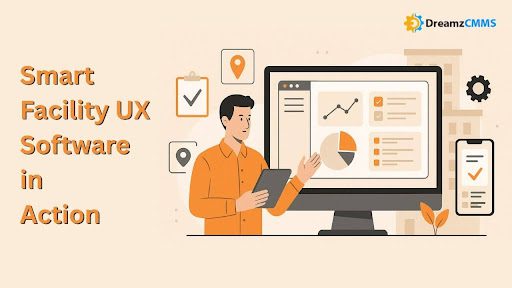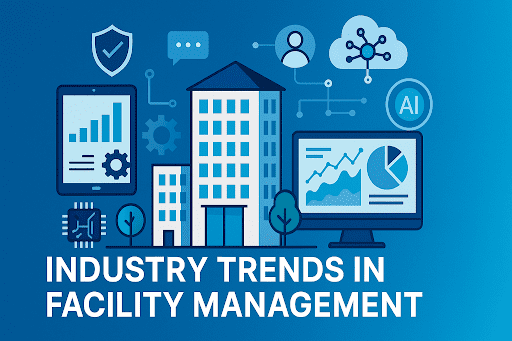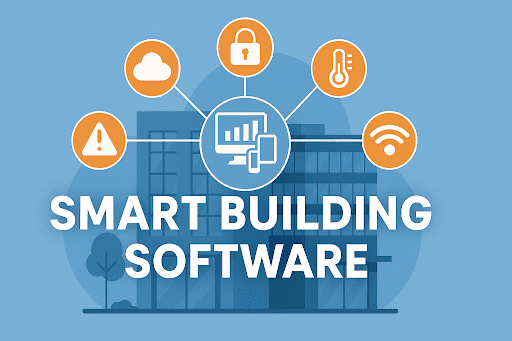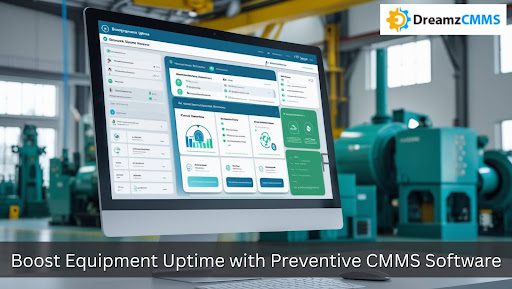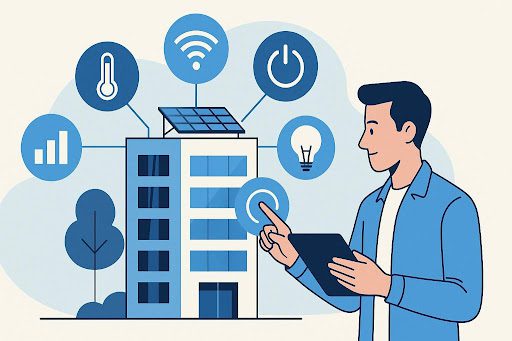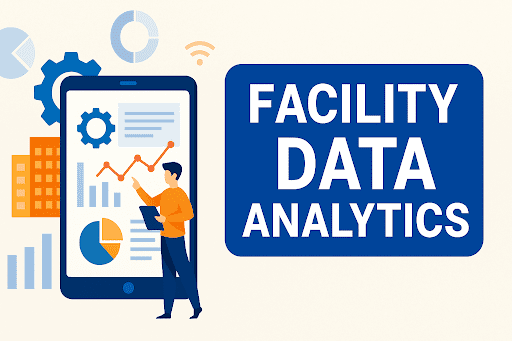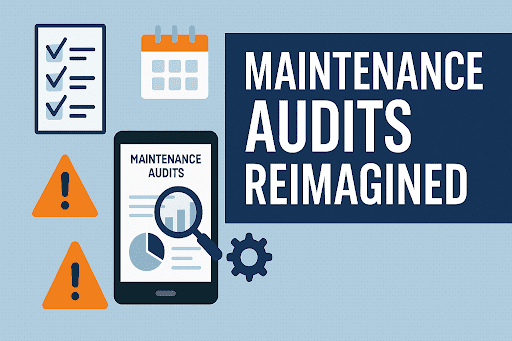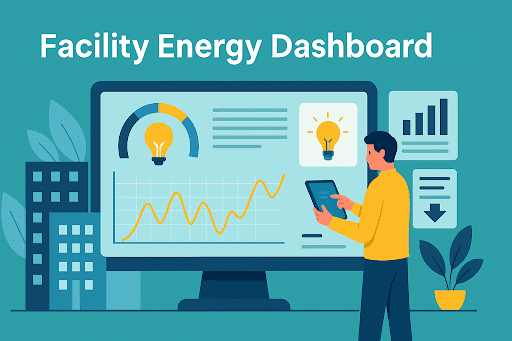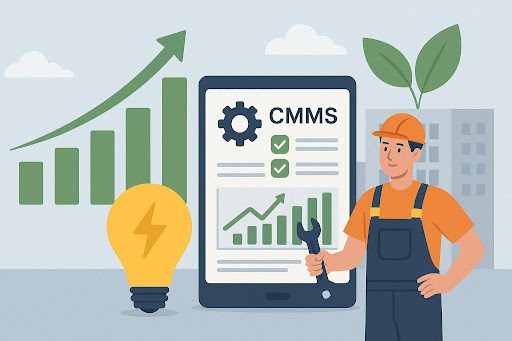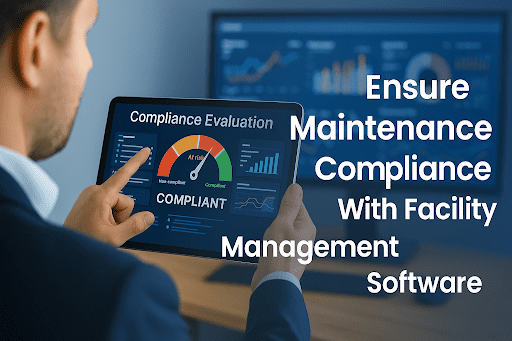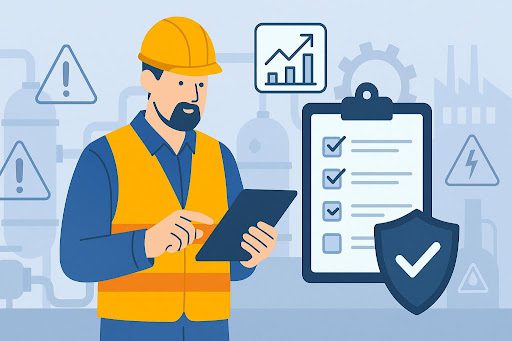 BACK TO Blog
BACK TO Blog
Asset Rental Management
Facility
Energy Use Is Becoming a Leadership Conversation Facility management is undergoing a quiet transformation. What once revolved around maintenance tasks now plays a part in broader business strategy. One area drawing increasing attention is energy usage. High utility costs and growing sustainability expectations have pushed energy into the spotlight. Leaders
- June 05, 2025
- DreamzCMMS Team
- 8 minutes read

- June 05, 2025
- DreamzCMMS Team
- 8 minutes read
Energy Use Is Becoming a Leadership Conversation
Facility management is undergoing a quiet transformation. What once revolved around maintenance tasks now plays a part in broader business strategy. One area drawing increasing attention is energy usage.
High utility costs and growing sustainability expectations have pushed energy into the spotlight. Leaders want to know more than how much is being spent. They want to understand how buildings behave and how to guide them toward better performance.
This is where Facility Energy Tools begin to matter.
With the help of energy management tools for facilities, teams can track how energy flows through a building. They can pinpoint where waste occurs, compare usage across locations, and make changes based on real-time information rather than assumptions.
The shift is not about adopting another system. It is about gaining control. By using facility energy monitoring software, decision-makers access the kind of insight that helps reduce operating costs and improve system reliability.
Tools such as Facility Management Software bring these capabilities together. They simplify how data is captured, analyzed, and applied without overloading teams with complexity.
Facility leaders are no longer seen as responders. They are becoming enablers of efficient, future-ready operations. And that shift begins with better visibility into energy use.
Real-Time Insight Changes How Facilities Operate
In facility operations, timing matters. The ability to respond to changes in energy usage when they happen can make a measurable difference in both performance and cost.
Traditional systems often report data too late. By the time spikes are noticed, the damage has already been done. Delayed insight leads to missed savings and, in some cases, equipment strain.
That is why real-time facility energy usage tools are gaining traction. These systems track consumption as it happens. Whether it is a sudden HVAC load increase or lights running during off-hours, alerts can be set, reviewed, and acted on in the moment.
For executives, this means better decision-making. When energy is tracked in real time, facilities can be adjusted without delay. That kind of agility protects budgets and ensures building systems work in harmony.
Smart tools also allow deeper pattern analysis. They show where usage is creeping up and identify the conditions behind those changes. Over time, this leads to more accurate forecasting and stronger cost control.
Solutions like DreamzCMMS combine these features into one interface. They provide visibility, automate reports, and help turn data into action all without disrupting day-to-day work.
In the push for operational excellence, seeing what is happening right now is not just helpful. It is essential.
Sustainability Moves From Reporting to Daily Operations
Sustainability is no longer treated as a separate initiative. It has become a regular part of how modern businesses run, especially in facility management. The focus has shifted from setting targets to embedding energy-conscious decisions into everyday workflows.
Energy-saving tools for buildings are making this shift possible. These tools do not just track usage. They provide insights that help teams act with purpose, lowering consumption, reducing emissions, and maintaining comfort without compromise.
For executive teams, this means more than compliance. It supports brand reputation, strengthens investor confidence, and aligns with broader ESG objectives. The ability to show progress with data is no longer optional.
Tools designed for sustainable facility operations help bridge the gap between policy and practice. When systems are tuned to operate efficiently, energy savings follow naturally.
Technologies such as Field Service Management Software further enhance this effort. They help coordinate field teams to respond faster, address inefficiencies sooner, and reduce unnecessary site visits all of which contribute to a lighter environmental footprint.
What emerges is not a new layer of complexity but a smarter way to work. With the right tools in place, sustainability becomes a natural outcome of well-managed operations.
Turning Data Into Practical Adjustments
Facility teams do not always need complex solutions. Sometimes, all they need is a clearer view of what is happening in the background. That is where modern energy data comes into play.
With access to energy analytics for facility managers, decisions become easier to make. These tools help teams notice trends like when energy use starts to rise or when systems begin to fall out of rhythm. Once those patterns are visible, it becomes much easier to act.
Heating and cooling systems often draw more power than expected. Using HVAC energy monitoring tools, staff can see when a system is running longer than needed or when small adjustments might help lower demand. The benefit shows up in both energy savings and equipment longevity.
No one needs to guess where the waste is coming from. The data shows it plainly.
Some businesses also use Field Sales Software to create stronger ties between facility data and on-site schedules. With better coordination, fewer trips are required, and time is spent more effectively.
These tools are not about collecting more information. They are about helping buildings run smoother with fewer disruptions, more insight, and less noise behind the scenes.
Is Your Facility Data Driving Business Value?Energy usage tells a story but only if your team can read it in time. Without the right tools, costs go unnoticed, trends are missed, and decisions lack direction. Modern Facility Energy Tools make that story clear. With real-time insights and analytics, facility leaders can act sooner, plan smarter, and support long-term goals. Explore how better visibility supports stronger outcomes. Check out DreamzCMMS. Schedule a demo today to see how energy data strengthens financial planning and day-to-day operations. |
Aligning Energy Goals Across Teams
Energy efficiency is not a task reserved for the facility team alone. It touches nearly every part of the organization from finance to compliance to sustainability reporting. To make real progress, departments need a common view of the same data.
That is where the right Facility Energy Tools become more than just monitoring systems. They serve as shared platforms where leadership, technicians, and analysts can collaborate. The clearer the data, the easier it is to make collective decisions that stick.
For example, finance teams use consumption reports to track costs by building or region. Operations look for timing issues or process gaps. Maintenance reviews the data for early signs of wear. With access to a single system, these groups can work toward one goal without chasing different numbers.
Using a tool like DreamzCMMS, leadership can explore how these systems simplify team alignment. The tool shows what is being used, where, and how it compares to benchmarks—all in one place.
When the right insights reach the right teams, change becomes easier to manage. Energy reduction is no longer a single department's mission; it becomes a company-wide mindset, supported by real numbers and shared goals.
Better Budgeting Starts with Clear Utility Tracking
Controlling utility expenses begins with knowing exactly where the money is going. That may sound simple, but without accurate, real-time data, even small billing errors or unnoticed overuse can add up quickly.
Utility cost tracking in facilities is no longer something that can wait for monthly reports. Today’s leaders need daily visibility. That means moving from spreadsheets and manual logs to systems that monitor consumption as it happens.
Modern Facility Energy Tools give finance and operations teams what they need to track usage, compare performance, and highlight areas that may need attention. With these tools in place, forecasting becomes more precise, and planning becomes easier to manage.
They also help identify patterns of times of day, locations, or systems that tend to draw more power. That information is useful not just for reducing waste but for shaping long-term capital investment strategies.
When energy data supports planning, upgrades are no longer reactive. Teams can prioritize replacements based on need, not assumptions. That leads to better investments, fewer surprises, and more confidence in how energy budgets are managed.
Facility leaders who use systems like Field Service Management Software often find that aligning service activity with energy use leads to stronger overall performance. It builds a tighter connection between field decisions and financial outcomes.
Final Thoughts: Building Smarter Facilities with Data-Driven Energy Strategy
Energy performance is now a measurable part of business success. From real-time monitoring to analytics, today’s Facility Energy Tools give leaders the power to act, not react.
The shift is clear: cost control, system reliability, and sustainability are no longer competing goals. With the right tools, they work together. Whether it is improving utility cost tracking in facilities, deploying HVAC energy monitoring tools, or streamlining decisions with energy analytics for facility managers, the results are measurable and lasting.
What sets forward-thinking organizations apart is how they use their data. Instead of looking back at last month’s bills, they use live insights to shape what happens tomorrow.
Platforms like DreamzCMMS and Facility Management Software allow teams to monitor performance, reduce waste, and operate with clarity without adding complexity.
Additional Reads for Executive Decision-MakersExplore more ways to enhance your facility strategy through insight-driven tools and proven practices:
|
Bring Energy Management Into the BoardroomIf your facilities still rely on outdated systems or delayed reports, you may be missing out on real savings and strategic control.Explore how DreamzCMMS helps bring energy and operations under one intelligent platform. Book a Free Demo today and discover how real-time energy visibility empowers better business decisions. |
Ready for More?
Talk to one of our CMMS experts and see how DreamzCMMS can simplify your maintenance operations.
Book a free consultation
